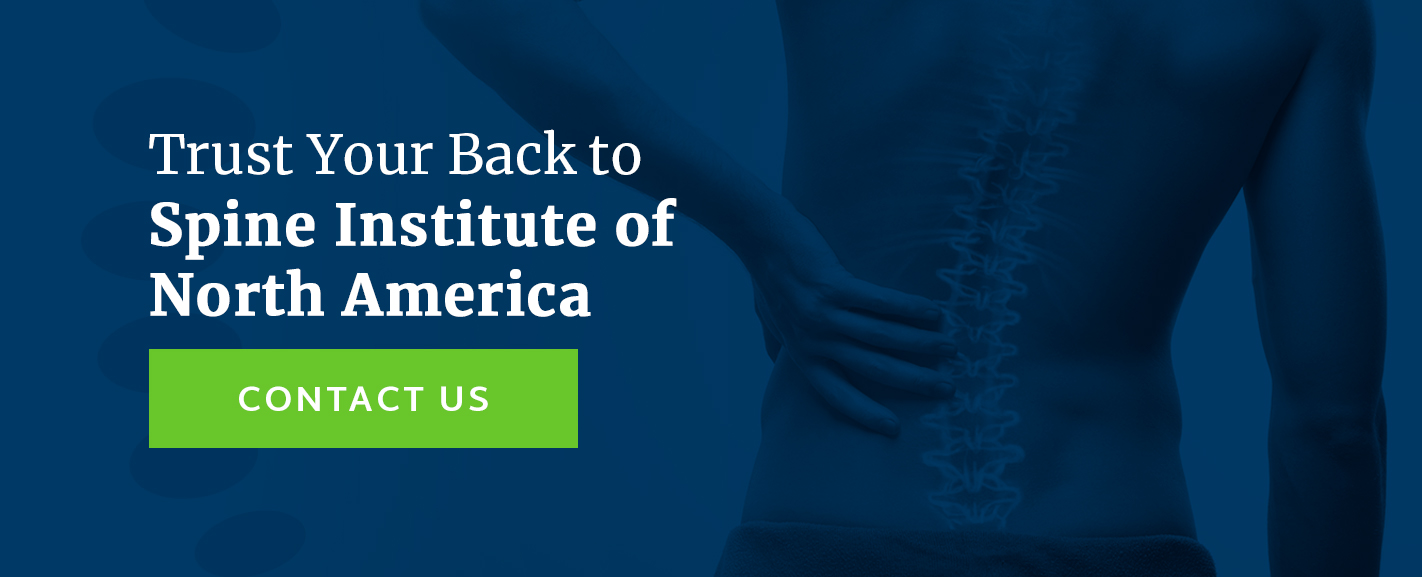The intricate system of bones and sponge-like cushions in your spine not only provides your body with basic support, it also protects the main communication lines between your brain and the rest of your body. Even the slightest damage to the spine has implications for the rest of your body. Fortunately, even though the spine is intricate, it is also very flexible and tough. It twists, turns, bends, and absorbs shocks so that you can get through the motions of daily life.
Though the spine is very hardy, it isn’t invincible, and when it has problems, it can make even the most basic actions difficult and painful. Even uninjured spines tend to wear out and have issues over time. Whether it is normal wear and tear, illness, or trauma, one of the most common ways the spine breaks down is herniated discs.
What Is a Herniated Disc?
The main components of your spine are bones and nerves, but if it was just them, you’d be in a world of hurt. The bones would grate against one another, wear one another down, and constantly pinch the nerves, incapacitating you with pain. Thankfully, your spine features discs. These are tough pillows that sit between each vertebra and keep the bones from grating or pinching as you move. As you can imagine, when a disc has trouble, it’s hard to ignore.
When a disc is herniated, it is basically out of place. An out-of-place disc inevitably pinches nerves and impedes the function of the spine, causing significant issues. It can be forced out of place by trauma or wear down enough that it cannot maintain its position. When you have a herniated disc, the tough wall of the disc fails, allowing the jelly-like center to bulge out into the spine around it. This condition used to be something sufferers just had to live with, but we have the ability to solve it with minimal incisions and recovery.
How Do I Know I Have a Herniated Disc?
Figuring out what is going on when you’re suffering from long-lasting back pain should happen as quickly as possible. Though some herniated discs are asymptomatic, Pain is the most common symptom of a herniated disc, and it is usually intense enough to need medical treatment. There are other symptoms that show up with a herniated disc, so let’s get into the details here!
- Pain
- Because herniated discs are most common in the lumbar spine, you’ll commonly experience pain in your buttocks, thighs, calves, and feet. If the herniated disc is in your cervical spine, you’ll be able to tell because you’ll experience pain in your arms and shoulders. As for the type of pain, it’s most common to have shooting pains whenever you move your spine abruptly (sneezing, coughing, etc.).
- Tingling and Numbness
- When a nerve is put under pressure or pinched completely, every body part it serves will feel funny. If you consistently feel tingling or numbness in your extremities, chances are good nerve function is being disrupted and you need a medical solution. Remember, if the issue is in your lumbar spine, you’ll get tingling in your lower extremities. The cervical spine affects your upper extremities.
- Weakness and Fatigue
- A muscle that no longer receives a full signal from its nerve won’t be able to function fully. As a result, the muscle will weaken and waste away, which can have a negative effect on your motor functions and mobility.
- Inflammation and Spasms
- When your body experiences a trauma or injury of any kind, the body sends an immune response to the area. This isn’t always helpful, as it causes uncomfortable muscle tightness and swelling. If you let the issue go long enough, you could develop chronic inflammation in the area. The best solution is to connect with a professional who will be able to track the source of the problem and provide effective solutions. Herniated discs generally show up in the lumbar (lower) spine, though they sometimes happen in the cervical (neck) spine. They can be identified by imaging technology, including MRIs and CAT scans.
Turn to Spine INA
At the Spine INA, we specialize in providing minimally-invasive herniated disc treatment. Contact us to learn more about what we can do for you!










Leave a Reply